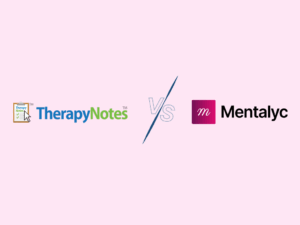In the US healthcare system, F43.23 is a specific code used for billing within the ICD-10-CM system (effective October 2023). This code signifies a diagnosis of Adjustment Disorder with Mixed Anxiety and Depressed Mood. Remember, international versions of ICD-10 may use different codes for this diagnosis.
What does the ICD 10 Code F43.23 stand for?
The ICD 10 Code F43.23 stands for adjustment disorder with mixed anxiety and depressed mood. Adjustment disorders occur when someone has an identifiable maladaptive response to an identifiable stressor. With adjustment disorder, a person has to have a behavioral or emotional response to a stressor within three months of it occurring.
The code F43.23 specifies that this is an adjustment disorder with mixed anxiety and depressed mood. If you diagnose F43.23, that means the person is having some maladaptive ways of coping in response to a specific stressor that is also causing depression and anxiety.
Criteria for adjustment disorder
Adjustment disorder occurs when someone has difficulty adjusting after a stressor has occurred. According to the DSM-V, the criteria for adjustment disorder are as follows:

New! Transfer your notes to EHR with a single click. No more copy-pasting.
- Distress occurring after the stressor that’s out of proportion to the intensity of the stressor
- Troubles in occupational, social, or other areas of functioning
The troubles the person is experiencing can’t meet the criteria for another mental health disorder. There’s also a note in the DSM-V about considering cultural context regarding the stressor and subsequent symptoms.
When diagnosing F43.23, it’s important to note that the symptoms of the disorder can’t be symptoms of normal grief. Grief disorders might be applicable in this situation, but not adjustment disorders. Adjustment disorders are classified under trauma and stressor-related disorders in the DSM-V.
Adjustment disorder may present with the following symptoms:
- Low mood
- Anxiety
- Irritability
- Difficulty focusing or concentration
- Lack of motivation
- Interpersonal difficulties
- Work difficulties
- School or academic challenges
These symptoms often occur due to the stressor the individual is experiencing. Treatment should be targeted towards an individual’s specific symptoms.
What’s the prevalence rate of adjustment disorder?
Adjustment disorder is estimated to have a prevalence rate of 11.5%. Research indicates that adjustment disorder with mixed anxiety and depressed mood is the most common presentation of adjustment disorder.
Among psychiatric disorders research suggests that adjustment disorder ranked 7th among all psychiatric conditions. The high ranking indicates the need for clinicians to be well-versed in adjustment disorder and its presentation in clients.
A Brief History of Adjustment Disorder
Adjustment disorder was first recognized in the DSM-I in 1952 as a “transient situational personality disorder” despite it not being a personality disorder. It evolved into “transient situational disturbances” in the DSM-II before it was officially recognized as adjustment disorder in the DSM-III in 1980.
Additionally, the subtypes of adjustment disorder were introduced in the DSM-IV. When the DSM-V was released, there were no major updates to the criteria or specifiers of adjustment disorder. The most significant change in the DSM-V was the movement of the disorder to the trauma and stressor-related disorders section.
Adjustment Disorder Specifiers
If you work with clients with adjustment disorders, six specifiers can help explain the diagnosis of adjustment disorder.
The six specifiers for adjustment disorder are:
- F43.21: With depressed mood: This specifier is characterized by low mood, hopelessness, and periods of tearfulness.
- F43.22: With anxiety: This specifier is characterized by periods of worry, nervousness, jitteriness, or separation anxiety.
- F43.23:With mixed anxiety and depressed mood: This specifier is characterized by predominance of anxiety and depressed mood.
- F43.24: With disturbance of conduct: This specifier is characterized by a conduct disturbance.
- F43.25: With mixed disturbance of emotions and conduct: This specifier is characterized by both conduct disturbance and emotional symptoms such as depression and anxiety.
- F43.20: Unspecified: This specifier does not fall into the other categories but encompasses all maladaptive reactions to adjustment disorder that don’t fit the above specifier.
When you are choosing a specifier for adjustment disorder, it’s important to note if your client has emotional symptoms consistent with an anxiety or mood disorder. If they do, this should clue you into adjustment disorder being an incorrect diagnosis. There are many similar disorders to adjustment disorders.
Disorders similar to adjustment disorder
According to the Diagnostic and Statistical Manual of Mental Health Disorder, other disorders should be ruled out before making a diagnosis of adjustment disorder. Research indicates that differential diagnoses to consider before diagnosing adjustment disorder include:
- Bereavement
- Post-traumatic stress disorder (PTSD)
- Major depressive disorder (MDD)
- Acute stress reaction
- Normal reactions to stress
- Personality disorders
- Anxiety disorders
When an individual has an adjustment disorder, they can experience anxiety and depression. Still, these are often below the threshold for meeting the criteria for meeting an anxiety or depressive disorder.
Examples of stressors associated with adjustment disorder
When billing adjustment disorder, here are some everyday stressors related to the diagnosis:
- Conflict at home
- Conflict at work
- Divorce
- Illness
- Disability
- Medical concern
- Financial difficulties
While this list isn’t all-encompassing, research suggests that an adjustment disorder diagnosis can be a single event or a combination of many stressful life events.
Tips to remember when billing adjustment disorder F43.23
When you bill F43.23 there, here are some tips to keep in mind:
- Ensure the client doesn’t meet a diagnosis for another mental health disorder
- If their symptoms persist for more than six months, another diagnosis may be applicable
- If the client is experiencing grief, this doesn’t qualify for adjustment disorder
- If the client is having a nonpathological normal reaction to stress, this doesn’t qualify for adjustment disorder
Remember, the ICD codes help guide your treatment planning for the client. Diagnosing your clients accurately helps provide better care. F43.23 encompasses both anxiety and depression in response to the stressor your client is experiencing.
How to create a treatment plan for adjustment disorder
You can create well-written treatment plans. The treatment plan for adjustment disorder should be centered around reducing symptoms and helping your clients adjust and cope with the stressor they are experiencing.
If you need help writing treatment plans, consider trying Mentalyc for free. Mentalyc is an AI that can help write your progress and treatment plans. Using Mentalyc is HIPAA-compliant and saves you time on your administrative work.
The Bottom Line of F43.23
Adjustment disorder is a mental health diagnosis characterized by difficulties adjusting after a stressor. The stressor can’t be a part of normal grief. ICD 10 code F43.23 is a diagnosis code for Adjustment disorder with anxiety and depressed mood, the most common presentation of adjustment disorder.
If you treat clients with adjustment disorder, it’s essential to keep in mind that anxiety and depression may include reactions to stress. If anxiety and depression are long-term and intense, your client might instead meet the criteria for anxiety disorders or depressive disorders.
Using the correct ICD-10 code helps you develop a successful treatment plan for your clients and code diagnoses properly. Many tools can help you write treatment plans for F43.23. Mentalyc is one tool you can use to help you write treatment plans and notes, though many other tools can help.
References:
Yaseen Y. (2017). Adjustment disorder: Prevalence, sociodemographic risk factors, and subtypes in an outpatient psychiatric clinic. https://www.sciencedirect.com/science/article/abs/pii/S1876201816305913?via%3Dihub
Hirsch J.A., et al. (2016). ICD-10 History and Context. https://www.ncbi.nlm.nih.gov/pmc/articles/PMC7960170/
Maercker A, et al. (2017). Adjustment Disorder Diagnosis: Improving Clinical Utility. https://www.tandfonline.com/doi/full/10.1080/15622975.2018.1449967
Substance Abuse and Mental Health Services Administration. (2016). Impact of DSM-IV to DSM-5 changes on the national survey on drug use and health. https://www.ncbi.nlm.nih.gov/books/NBK519704/table/ch3.t19/
Why other mental health professionals love Mentalyc

“It takes me less than 5 minutes to complete notes … it’s a huge time saver, a huge stress reliever.”
Licensed Marriage and Family Therapist

“It’s so quick and easy to do notes now … I used to stay late two hours to finish my notes. Now it’s a breeze.”
Licensed Professional Counselor

“By the end of the day, usually by the end of the session, I have my documentation done. I have a thorough, comprehensive note … It’s just saving me hours every week.”
CDCII

“A lot of my clients love the functionality where I can send them a summary of what we addressed during the session, and they find it very helpful and enlightening.”
Therapist






